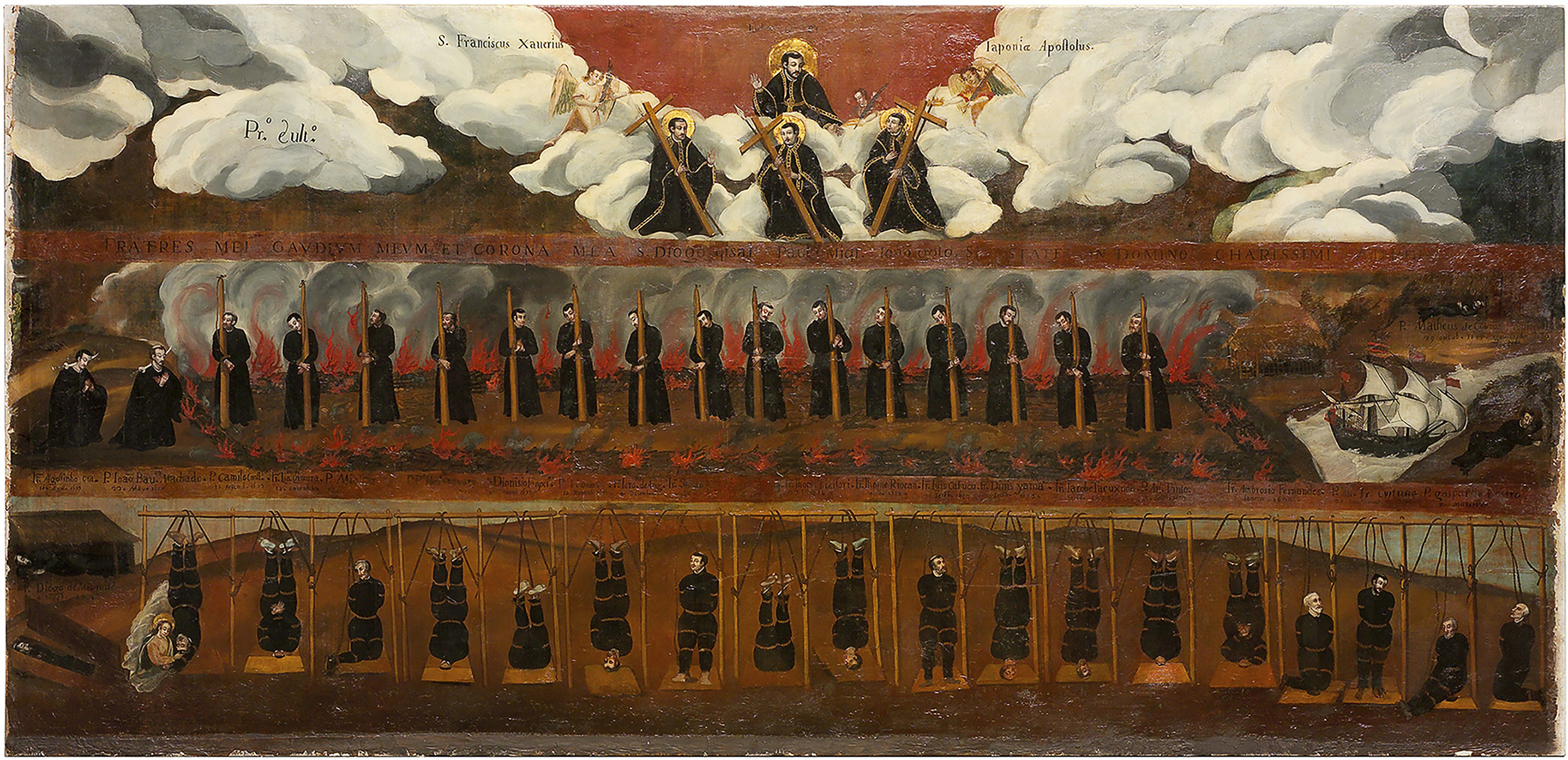ana-tsurushi on:
[Wikipedia]
[Google]
[Amazon]

 , also known simply as , was a Japanese
, also known simply as , was a Japanese

 , also known simply as , was a Japanese
, also known simply as , was a Japanese torture
Torture is the deliberate infliction of severe pain or suffering on a person for reasons such as punishment, extracting a confession, interrogation for information, or intimidating third parties. Some definitions are restricted to acts c ...
technique used in the 17th century to coerce Christians ("Kirishitan
The Japanese term , from Portuguese ''cristão'' (cf. Kristang), meaning "Christian", referred to Catholic Christians in Japanese and is used in Japanese texts as a historiographic term for Catholics in Japan in the 16th and 17th centuries.
M ...
") to recant
Recantation means a personal public act of denial of a previously published opinion or belief. It is derived from the Latin "''re cantare''", to re-sing.
Philosophy
Philosophically recantation is linked to a genuine change of opinion, often ...
their faith. The victim was hung head-down by the feet. Both Japanese and Western Christians are known to have been submitted to the torture. One of the victim's hands would be held tight with a rope, but the other would be left free so that he could signal his willingness to recant.
The technique was said to be unbearable for those submitted to it, though some particularly resilient martyrs like Lorenzo Ruiz
Lorenzo Ruiz ( fil, Lorenzo Ruiz ng Maynila; zh, link=no, 李樂倫; es, link=no, Lorenzo Ruiz de Manila; November 28, 1594 – September 29, 1637), also called Saint Lorenzo of Manila, is a Filipino saint venerated in the Catholic Church. A ...
never broke under torture. The body was often lowered into a hole, itself often filled with excrement at the bottom. Typically, a cut would be made in the forehead around their temples in order to let blood pressure decrease in the area around the head. The aim was to "break their resolve" to renounce their faith or they would eventually die. Sometimes there was a doctor to resuscitate them only to be tortured again. An estimated 2,000 Christians died as martyrs. Christians were let go after apostatizing, and in this way the Shogunate practically purged it from Japan.
A notable victim of this method of torture was Saint Lorenzo Ruiz
Lorenzo Ruiz ( fil, Lorenzo Ruiz ng Maynila; zh, link=no, 李樂倫; es, link=no, Lorenzo Ruiz de Manila; November 28, 1594 – September 29, 1637), also called Saint Lorenzo of Manila, is a Filipino saint venerated in the Catholic Church. A ...
, the first Filipino
Filipino may refer to:
* Something from or related to the Philippines
** Filipino language, standardized variety of 'Tagalog', the national language and one of the official languages of the Philippines.
** Filipinos, people who are citizens of th ...
martyr to be canonized
Canonization is the declaration of a deceased person as an officially recognized saint, specifically, the official act of a Christianity, Christian communion declaring a person worthy of Cult (religious practice), public veneration and enterin ...
by the Roman Catholic Church.
''Ana-tsurushi'' was made famous in the novel ''Silence
Silence is the absence of ambient audible sound, the emission of sounds of such low intensity that they do not draw attention to themselves, or the state of having ceased to produce sounds; this latter sense can be extended to apply to the ce ...
'' by Shusaku Endo.
References
*Boxer, C.R. ''The Christian Century in Japan, 1549–1650''. Berkeley, Calif.: University of California Press, 1951. {{ISBN, 1-85754-035-2 (1993 reprint edition). Asian instruments of torture History of Christianity in Japan 17th century in Japan